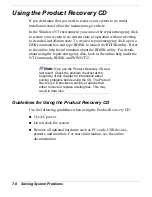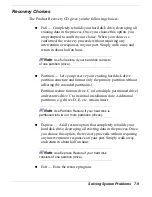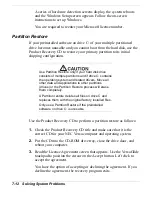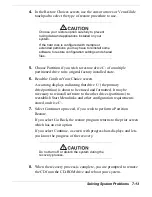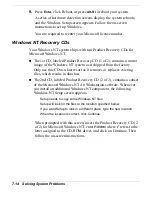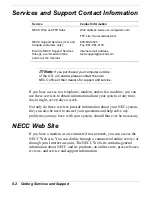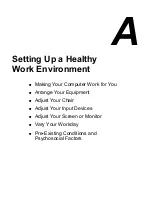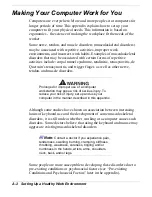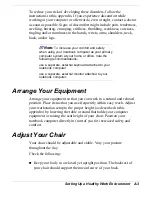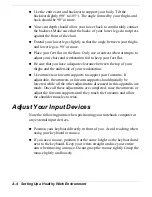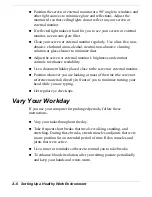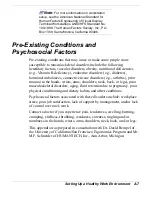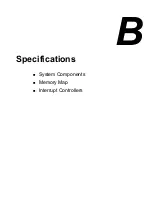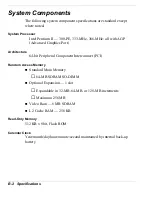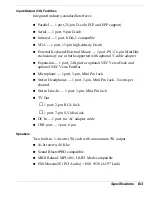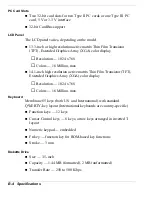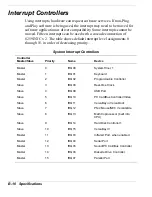
A-2 Setting Up a Healthy Work Environment
Making Your Computer Work for You
Computers are everywhere. More and more people sit at computers for
longer periods of time. This appendix explains how to set up your
computer to fit your physical needs. This information is based on
ergonomics - the science of making the workplace fit the needs of the
worker.
Some nerve, tendon, and muscle disorders (musculoskeletal disorders)
may be associated with repetitive activities, improper work
environments, and incorrect work habits. Examples of musculoskeletal
disorders that may be associated with certain forms of repetitive
activities include: carpal tunnel syndrome, tendinitis, tenosynovitis, de
Quervain's tenosynovitis, and trigger finger, as well as other nerve,
tendon, and muscle disorders.
Prolonged or improper use of a computer
workstation may pose a risk of serious injury. To
reduce your risk of injury, set up and use your
computer in the manner described in this appendix.
Although some studies have shown an association between increasing
hours of keyboard use and the development of some musculoskeletal
disorders, it is still unclear whether working at a computer causes such
disorders. Some doctors believe that using the keyboard and mouse may
aggravate existing musculoskeletal disorders.
Note:
Contact a doctor if you experience pain,
tenderness, swelling, burning, cramping, stiffness,
throbbing, weakness, soreness, tingling and/or
numbness in the hands, wrists, arms, shoulders,
neck, back, and/or legs.
Some people are more susceptible to developing these disorders due to
pre-existing conditions or psychosocial factors (see “Pre-existing
Conditions and Psychosocial Factors” later in the appendix).

